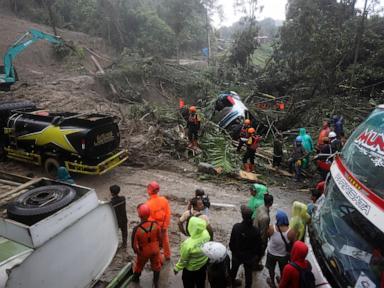
It’s long been agreed that a huge asteroid smashed into earth and wiped out the dinosaurs – but scientists have now revealed that more than one crashed into the planet.
A smaller asteroid is believed to have crashed into the ocean near West Africa in the same era, creating another ‘catastrophic’ event.
The impact would have triggered a 2600 foot tall tsunami to rush across the Atlantic Ocean, Dr Uisdean Nicholson from Heriot-Watt University found.
The crater left from the second asteroid’s impact has been dubbed the Nadir crater, and it was first discovered in 2022.
The crater off the west coast of Africa is only 9km wide, compared to the 180km-wide Chicxulub crater in Mexico which ultimately wiped out the dinosaurs.
Dr Nicholson said: ‘Imagine the asteroid was hitting Glasgow and you’re in Edinburgh, around 50 km away. The fireball would be about 24 times the size of the Sun in the sky – enough to set trees and plants on fire in Edinburgh.’

Seismic quakes equivalent to a magnitude 7 earthquake would have followed the massive impact.
Dr Nicholson and his team still don’t know why the two asteroids struck earth so close together – as it’s rare for asteroids to hit earth in general.
He added: ‘This is the first time that we’ve ever been able to see inside an impact crater like this – it’s really exciting.’
This scenario imagining Earth being hit by a sizeable asteroid isn’t purely a morbid thought exercise.
In five years time, one wider than the 330-metre Eiffel Tower will pass closer to us than TV satellites, skimming within 20,000 miles in a stunning near miss.
The space rock known as 99942 Apophis was named after the Egyptian god of chaos and destruction when it was discovered in 2004, because scientists were so worried it might collide with us.
Models eventually showed it would fly back out into space – but there are other asteroids this size in the solar system, and the problem is that we still don’t know how many, or where they could all be heading.
Get in touch with our news team by emailing us at [email protected].
For more stories like this, check our news page.












 Bengali (Bangladesh) ·
Bengali (Bangladesh) ·  English (United States) ·
English (United States) ·